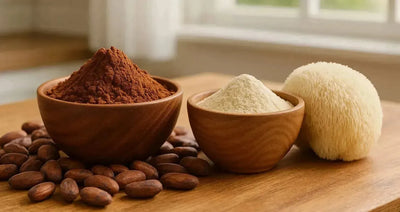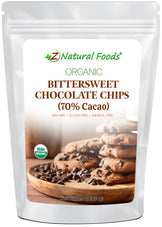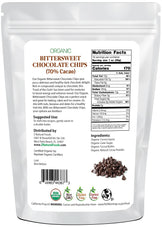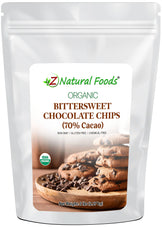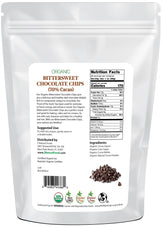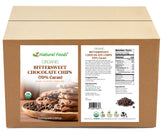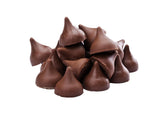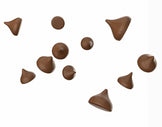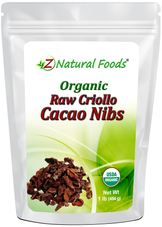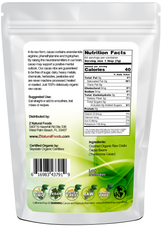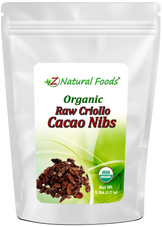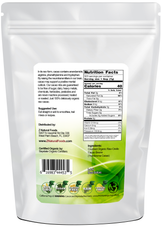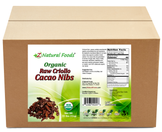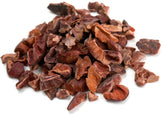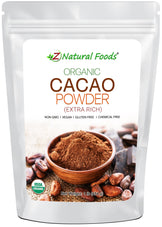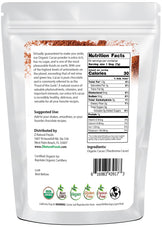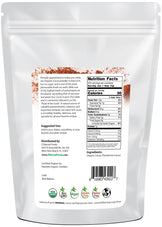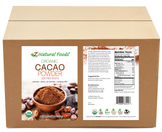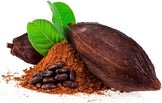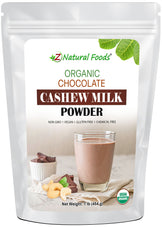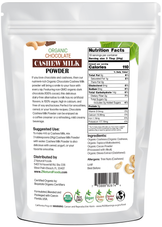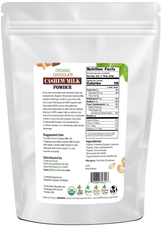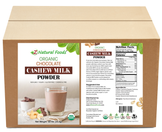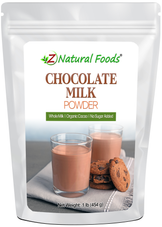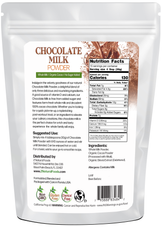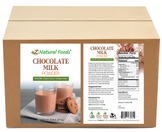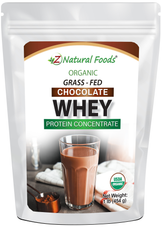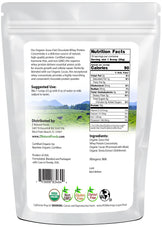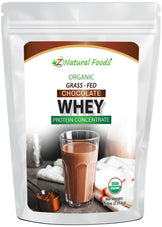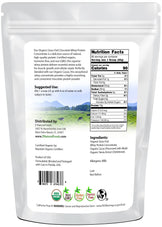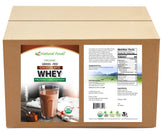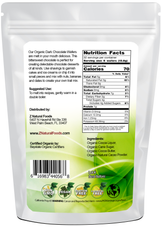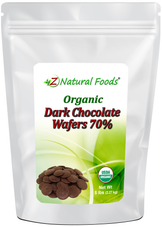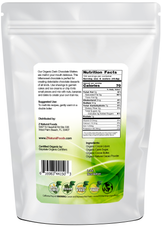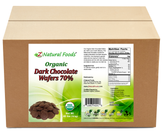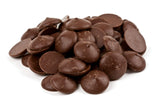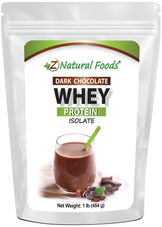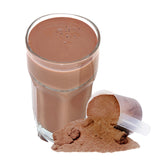Description
Description
100% pure cacao is what Hippocrates had in mind when he said, “Let food be thy medicine.”
Pure cacao - the ultimate functional food?
In a marketplace with so many choices, being an authority on all topics, specifically functional foods, can be confusing and overwhelming.
When creating a functional food product, one of the many important things is having readily available ingredients that supply a whole food complex, whether highly concentrated or not.
Why is our Extra-Rich Cacao Powder enjoyed in so many ways?
Because of the high quality, purity, incredibly smooth taste and texture, and versatility, our 100% pure Extra-Rich Organic Cacao powder is one of Z Natural Foods’ most popular products. Enjoyed in coffee, smoothies, toppings, cooking, baking, and in an endless number of delicious ways, Z Natural Foods’ cacao powder is a pantry staple.
A whole food complex represents and delivers all nutrients and phytonutrients in their natural synergistic state.
This assures the customer will get quality nourishment in a form that is most adaptable to the body.
And there is no better example of this than the broad spectrum world of chocolate.
As you know, there are many choices and varieties of chocolate to satisfy any individual's desires and cravings.
Because terms like chocolate, cacao, and cocoa are commonly used interchangeably, this often misleads people to believe they are all the same food.
Far from it.
Contrary to popular belief, these three terms primarily have one thing in common;
Chocolate, cacao, and cocoa all
originally come from 100% pure cacao
Ultimately, the end products are different foods providing vastly different levels of nourishing properties and qualities.
If you have never had the pleasure of experiencing the rich, creamy, deliciously smooth texture and complex bitter flavor of eating pure, unadulterated cacao, you don’t know what you are missing.
If you are one of these unfortunate individuals, you might make the mistake of referring to real cacao as cocoa or chocolate.
In order to understand chocolate and cocoa, let's begin by looking at the glorious food from which they originate; Cacao.
Pure cacao is one of nature's most wondrous creations and is seen as one of the most incredible foods on earth.
- Cacao beans are the rawest, most pure, and unadulterated form of what you may know as chocolate.
- Rich in the flavanols epicatechin and catechin, with procyanidins providing the majority of antioxidant activity.
- Cacao also contains a treasure trove of essential minerals like calcium, magnesium, and potassium.
- Untreated, raw, organic cacao has been used for centuries as a wonderfully nourishing food.
- Cacao is what Hippocrates had in mind when he said, “Let food be thy medicine.”
Dark Chocolate: The Great Transitional Food
You may have noticed that many chocolate products show a wide range regarding the percentage of “cacao solids” it contains.
Cacao solids are the components of the cacao bean remaining after the fatty portion (aka butter) has been extracted.
The amounts of cacao solids can range anywhere from 30%-100%.
It may surprise you to find out that companies can claim their products as “Dark Chocolate '' with as little as 50% cacao solids in their product because every country has its own specific standards.
The remaining percentage of all these bars is often sugar used to sweeten, and dairy is used as an emulsifier.
Some exceptions may use stevia or Luo Han Guo as the sweetener and leave more of the cacao butter in the product to fill the gap and give it a more decadent and indulgent flavor and texture.
The one thing that seems universally agreed upon is that products with 75%-85% cacao solids should be your start-off point.
As the percentage increases, the end product may be an acquired flavor to the untrained pallet.
Using percentage-based dark chocolate products is an excellent way to help your pallet transition into the authentic taste of cacao.
But regardless of your choice, ultimately, it is important to think about this…
Only pure cacao provides you with the feel-good benefits that have been falsely associated with chocolate products low in cacao solids.
With that, let’s now look at some common production techniques for chocolate products.
Dutch and Alkalized
You may have seen terms like Dutch or alkalized on a product label (you may know this as cocoa) and wondered what that means. They are the same process in which the cacao has been washed in potassium carbonate alkaline solution.
This is done to reduce bitterness and PH levels and to neutralize the acidity, which completely changes the flavor profile of the end product.
- Pure cacao has a pH of around 5-6 with a sharp, bitter flavor profile.
- Dutch-processed cocoa powder has a pH of 7 and a smooth, mellow, earthy flavor profile.
- This neutralizing process allows the cocoa not to react with baking soda.
- For these reasons, Dutch-processed cocoa was, for a long time, the more popular choice for baking.
- Today, people's pallets are changing because they eat more dark chocolate and eventually become lovers of natural pure cacao.
The experience of eating a nourishing form of cacao can be attributed to the synergy of unique compounds in this food.
Here are the four main compounds that compose the reasons we all love chocolate so much:
1. Caffeine: The great stimulant
Caffeine is the world's most widely used stimulating agent. It is well-known that caffeine stimulates the central nervous system. And according to studies, it may also stimulate blood flow in the brain and increase the secretion of serotonin. Around 300 milligrams (mg) a day of caffeine has been shown to be a beneficial dose for most adults. Approximately a 50-gram serving of cacao contains about 35 mg of caffeine.
2. Theobromine: The powerful antioxidant
Theobromine, also known as caffeine’s cousin, is primarily found in cacao and tea. In one 50-gram serving of cacao, you might discover about 250 mg of theobromine. Featured in Frontiers in Pharmacology, researchers found that this fantastic compound offers remarkable antioxidant properties, could be considered a safe and natural alternative in supporting specific health ailments, and is a lead compound for possibly developing novel future therapies.
3. Phenylethylamine (PEA): The feel-good chemical
Phenylethylamine (PEA) is the actual love compound found in cacao. While PEA is in cacao only in small amounts, it carries a significant effect. Via stimulation of the nervous system, PEA may trigger the release of endorphins and potentiate the activity of dopamine associated with sexual arousal and pleasure. So, in other words, that restless feeling you have when you are in love is primarily due to PEA.
4. Resveratrol: The healthy aging compound
Resveratrol is one of the most well-studied compounds when discussing how to support a healthy aging process. On average, just under 200 mcg of resveratrol is present in cacao powder per 100 grams which is half as much as you will find in California red wine. While that is minimal, a little bit goes a long way.
Here are a few more reasons to use Z Natural Foods’ 100% pure cacao.
A Healthy Heart
Cacao may nourish many aspects of a healthy heart, and the research is quickly piling up. According to a Japanese study, the polyphenolic compounds (a class of antioxidants) found in cacao show great promise in possibly suppressing inflammation levels in the cardiovascular system.
Another study showed that consuming cacao flavanols may positively impact cardiometabolic function -- possibly affecting the heart and metabolic conditions like diabetes.
Nourish your brain with cacao:
Cacao may have even more happy effects. A study conducted by researchers at the University of Reading showed the positive effects of cacao on the pressure of blood flow to the brain, stating that “significant increases in regional perfusion across the brain were observed following consumption of the high-flavanol drink relative to the low flavanol drink, particularly in the anterior cingulate cortex and the central opercular cortex of the parietal lobe.” Therefore, it was concluded that these positive results from consuming cacao flavanols had provided evidence for possibly supporting cognitive performance.
Finally, a review of four studies discussing the effects of chocolate on cognitive function and mood concluded that two studies failed to demonstrate specific behavioral benefits but did show significant alterations to brain activation patterns. Two other studies did, however, report acute cognitive effects from consuming cacao polyphenols. Therefore, while it seems unclear whether the effects of chocolate on mood are due to the orosensory characteristics of chocolate or to the pharmacological actions of chocolate constituents, further exploration of the impact of chocolate on cognitive facilitation is recommended, along with substantiation of functional brain changes associated with the components of cacao.
Cacao Butter: A nourishing fat
Cacao bean contains approximately 50% fat, comprised of two saturated fatty acids (palmitic & stearic) and one mono-unsaturated fatty acid (oleic). In an article titled Cocoa and Chocolate in Human Health and Disease, the following facts are stated regarding the nourishing qualities of cacao fat.
- The oil in cacao, referred to as cocoa butter, is a mixture of monounsaturated and saturated fatty acids. In the monounsaturated fraction, oleic acid predominates, as it does in olive oil.
- Most saturated fatty acids in cacao are palmitic acid and stearic acid.
- Stearic acid is unusual because it does not elevate serum lipid levels to the same degree as other saturated fatty acids.
- Shorter-chain saturated fatty acids such as myristic acid (14:0) and palmitic acid (16:0) are associated with increased LDL and atherogenesis; stearic acid is not.
- Although the lipid content of chocolate is relatively high, one-third of the lipids in cocoa butter is stearic acid (18:0), which is believed to be non-atherogenic and to exert a neutral cholesterolemic response in humans.
You may have heard the phrase “Extra Rich” when describing 100% cacao powder and wondered what it means.
This phrase describes the level of nourishing fats in the end product.
The higher quantity of nourishing fats gives the end product a noticeably richer and creamier texture and flavor.
An overwhelming number of 100% pure cacao powders provide, on average, between 7% and 10% cacao butter, while extra-rich cacao – just like Z Natural Foods’ extra-rich cacao – offers over 20%.
Fermentation is the Key to the flavor of Cacao
As stated earlier in this article, pure cacao has a complex, rich, and bitter flavor; for some, it is an acquired flavor.
But, few people know that what primarily brings out this unique flavor is the vital fermentation process (which creates the final acidity) cacao must undergo to be edible and provide its nourishing qualities.
Without this process, cacao would not have its unique flavor profile.
To be clear, it is NOT the cacao beans that are fermented.
Bacteria and enzymes created when the pod is cracked open ferment the white pulp surrounding the beans.
The beans endure the effects and are transformed. While the length of time for this process may differ based on various factors, all cacao fermentation goes through an anaerobic and aerobic phase.
- Anaerobic Phase: Anaerobic conditions are defined as environments that lack oxygen. In cacao, the pulp surrounding the beans created a barrier preventing air from entering. Because the pulp is composed of water, sugar, and various acids, it creates ideal conditions for microorganisms to grow and thrive. The primary players are yeast, pulp enzymes, and lactic acid-producing bacteria. The enzymes break down the pulp, so there is more space for air to enter this process. Citric acid is also broken down, helping to increase the pH of fermentation. The combination of increased pH and airflow marks the beginning of this phase.
- Aerobic Phase: Aerobic conditions are environments that contain oxygen. With cacao, this phase involves mixing and moving the beans around, allowing for a more uniform fermenting process. This stage is all about the combination of heat and diffusion of ethanol and acetic acid into the cacao beans, breaking down cell walls and producing an environment that develops the flavor precursors well known in cacao.
In simple terms, this process is essential to create the phyto-compounds associated with the flavor of cacao.
In conclusion, using percentage-based dark chocolate bars as a stepping stone to train and prepare your palate for the complex flavor profile and your body for the fantastic nourishing qualities of the holy grail known as cacao is perfectly fine.
When you are ready to take that next big step for powerful nourishment, keep in mind the small but significant differences that create a unique end product.
For more information about our 100% pure cacao, go here:
Organic, Extra-Rich Cacao Powder
To review all of our cacao products, go here:

